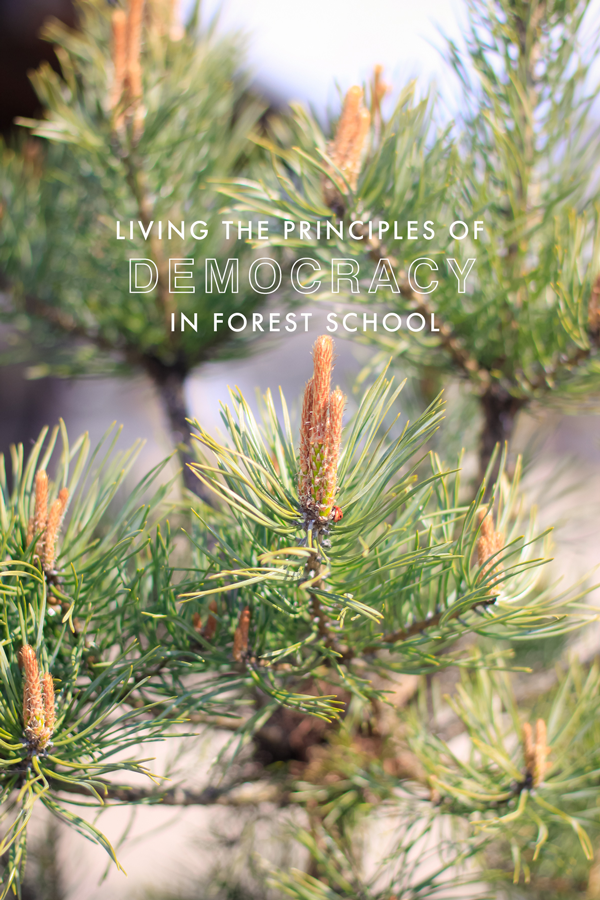The brochure for the school caught me by surprise. It was in Danish, a language I don’t speak (although my daughter does now as though she’s been here all her life). After running sentence by sentence laboriously through Google Translate, I learned more and more about the Danish Forest Schooling system. Initially, I wasn’t convinced. After all, what kind of school doesn’t have books and pencils? There was only the promise of full day walks in the forest and lessons determined by the direction of the breeze. Yet, the brochure went on to say that one of the foundational principles of this system of schooling, was teaching children “to live democracy”.
“How can that be?”, I thought. Ever the American, we feel that we know a thing or two about democracy. I expected forest school to cover things like recycling and planting trees, but not something like democracy. In my mind, democracy is about individual choices and freedoms, and the right to be part of a process that moves forward. How could this principle really be so foundational in a forest school, which so far seemed like some sort of tradition-neglecting, collective free-for-all in the woods? Remember, I was a skeptic once.
On my daughter’s first day, I tagged along, to help her get settled. The more I observed, the more I realized I had perhaps been missing something from my own definition of democracy all along. Democracy here wasn’t necessarily about the rights of the individual in a process, but rather, it was about taking into account the success of the group. When 20 toddlers walk for six hours in a forest, some are bound to get tired, some are bound to fall down, and some, like my daughter, are caught unaware by new terrain. Whereas she might was otherwise quick-moving and independent, these new circumstances made her slow and clumsy. In the democracy of the forest school though, no one gets left behind, including the new girl.
Without making her feel like an outcast, the group made sure she had a place with them. When she navigated tree trunks and branches, the other girls took turns staying back to hold her hand to help her through it. When she couldn’t open her lunch box, someone showed her how to do it herself. When she wasn’t quick enough to catch her own frog, one of the boys gave her his. And here’s the thing…no teacher asked the children to do these things. They just did them. And no adult did these things for her, the children themselves did. And that is, indeed, a different kind of democracy.
It’s not that our previous definition of democracy was wrong; it’s that it was somewhat incomplete. I still strongly believe in choices and freedoms and process, and I hope to pass that on through my own lessons to her. But I lost track of the fact that part of protecting democracy means that everyone needs to have access to those same choices and freedoms and processes. Democracy isn’t about one political party or another, or about how much is spent on an election…In order for democracy to work, it should be about the equal right to participate, and the equal right to have a voice. There will always be my daughter’s equivalent in our broader group – some who are weaker, who are unfamiliar, who don’t speak the language, who don’t know the terrain… Democracy isn’t about leaving them behind, or leaving them out. Democracy is about making sure we reach the destination together.

[…] Living the Principles of Democracy in Forest School: This may have sparked some conversations back and forth about what the technical definition of democracy (and trust me, as a former Political Science and IR student, I’m familiar) and the overall concept resonated with other parents in terms of what we want our little ones to learn from each other and from their school systems […]